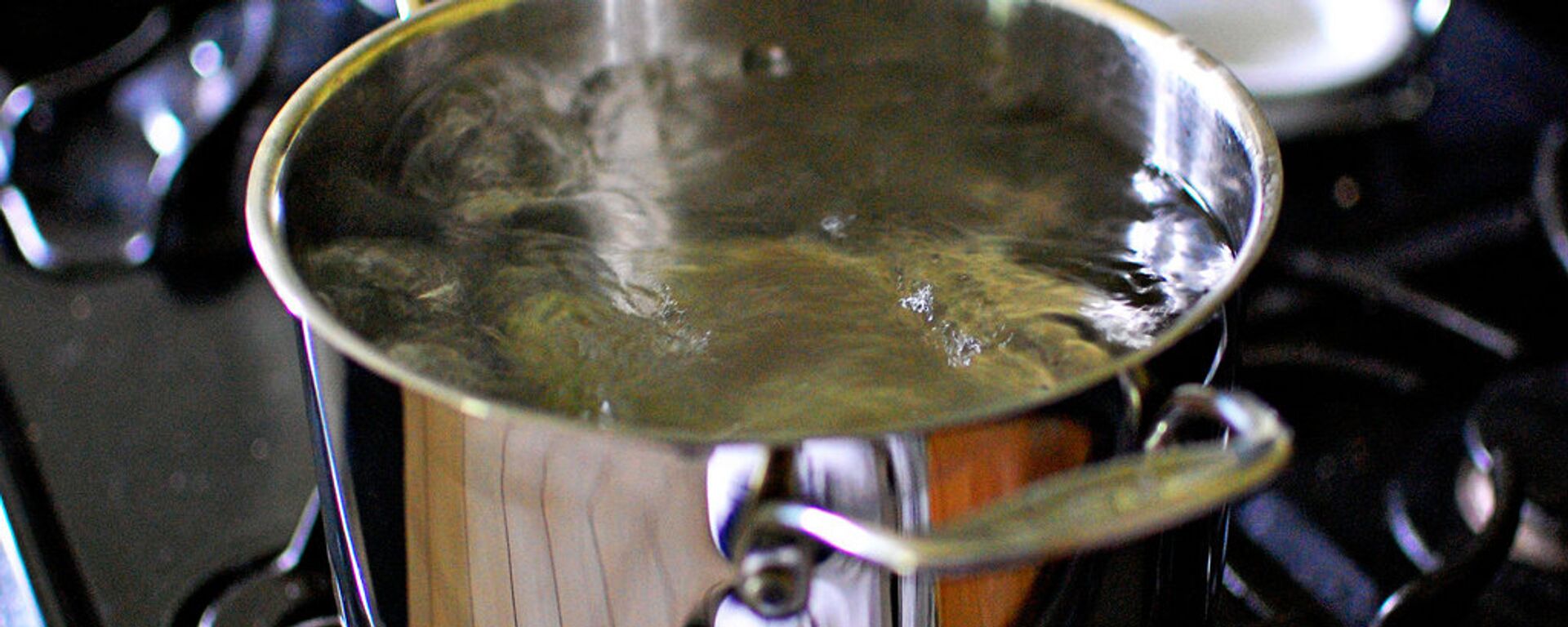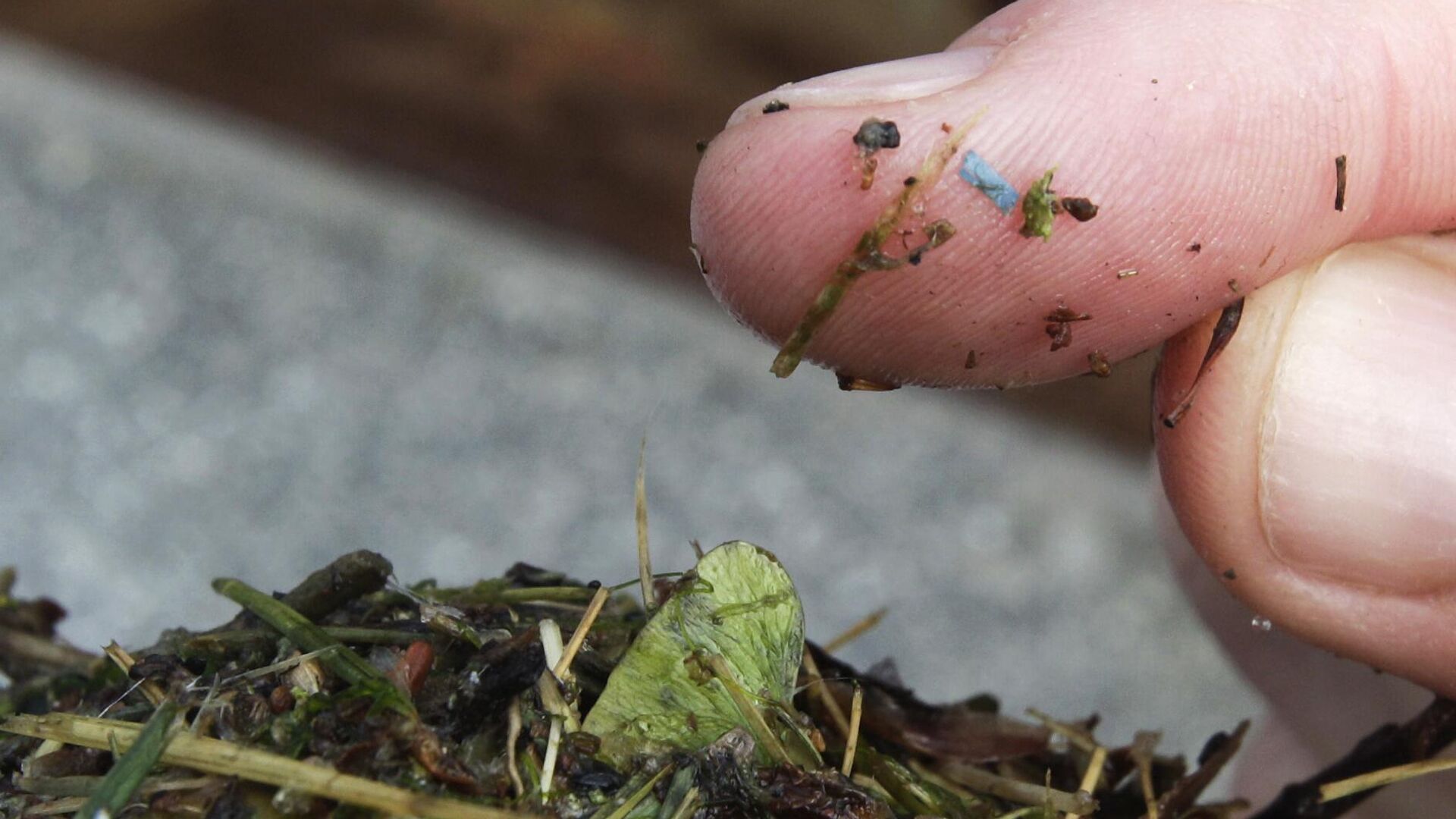https://sputnikglobe.com/20240310/nanoplastics-linked-to-an-increase-in-heart-attacks-and-strokes---study-1117236272.html
Nanoplastics Linked to an Increase in Heart Attacks And Strokes - Study
Nanoplastics Linked to an Increase in Heart Attacks And Strokes - Study
Sputnik International
A new study says that people with nanoplastics inside their bodies are 4.5 times more likely to suffer from a heart attack, stroke or die of other health related concerns over the next three years than people without them.
2024-03-10T03:54+0000
2024-03-10T03:54+0000
2024-03-10T03:54+0000
beyond politics
microplastics
plastic
plastic waste
plastic pollution
health
science & tech
medical science
pollution
food contamination
https://cdn1.img.sputnikglobe.com/img/07e8/03/0a/1117235840_0:170:1889:1233_1920x0_80_0_0_ee2337a849140d0395b5a790b1c37787.jpg
A new study says that people with nanoplastics inside their bodies are 4.5 times more likely to suffer from a heart attack, stroke or die of other health related concerns over the next three years than people without them, scientists say.The study was published in The New England Journal of Medicine, and explained how micro- and nanoplastics (NMPs) are “emerging” as a potential risk factor when assessing cardiovascular disease. It is the first time that such a connection has been made.Nanoplastics are tiny bits of plastic that can be as small as one-thousandth of a millimeter in diameter, though the definition applies to any small plastic piece that is less than five millimeters long in length. They are ubiquitous, long-lasting, and often require centuries to break down. But cells responsible for removing waste products can’t readily degrade them, so microplastics accumulate in organisms.These NMPs, about the size of a virus, are the perfect size to adversely affect how human cells function, and are capable of passing through key protective filters in one’s body including the intestinal lining and blood brain barrier. They have also been found in our food, breast milk and even the clouds in our skies.The researchers studied a group of patients who were already scheduled to undergo surgery for a condition known as carotid artery stenosis, which occurs when the carotid arteries—the main blood vessels that carry blood and oxygen to the brain—become narrowed after plaque, or fatty deposits, block normal blood flow. These arteries typically help supply blood to the brain. Face and neck.The researchers looked at plaque that was removed from 256 patients and tracked their health for an average of 34 months following the surgery. They found plastic particles, many of which were NMPs in the plaque of 150 patients—about 60%. At the follow-up, nonfatal heart attack, nonfatal stroke or death from any cause occurred in 20% of those patients and in 7.5% of the patients without detectable plastic particles.Chemical analyses showed that a majority of the particles were composed of either polyethylene, which is commonly used and is often found in food packaging, shopping bags and medical tubing.“To date, our study is the first that has associated the plastic contamination with human diseases,” said Raffaele Marfella, lead author of the study.Researchers are curious as to how 40% of the participants showed no evidence of microplastics in their plaques, given that microplastics are ubiquitous. One of the study's co-authors says it could be that the participants behave differently or have different biological pathways for processing plastics, however, more research is needed.
https://sputnikglobe.com/20240229/boiling-water-may-help-remove-90-of-microplastics---study--1117047283.html
Sputnik International
feedback@sputniknews.com
+74956456601
MIA „Rossiya Segodnya“
2024
News
en_EN
Sputnik International
feedback@sputniknews.com
+74956456601
MIA „Rossiya Segodnya“
Sputnik International
feedback@sputniknews.com
+74956456601
MIA „Rossiya Segodnya“
nanoplastics, microplastics, plastic pollution, health issues, study of plastic, plastic life, plastic impact, plastic impact on health, more plastic, plastic in our life, plastic's impact, plastic's impact on health, plastic in blood, blood plastic, no more plastic
nanoplastics, microplastics, plastic pollution, health issues, study of plastic, plastic life, plastic impact, plastic impact on health, more plastic, plastic in our life, plastic's impact, plastic's impact on health, plastic in blood, blood plastic, no more plastic
Nanoplastics Linked to an Increase in Heart Attacks And Strokes - Study
Roughly a week ago it was reported that boiling one’s water could help reduce the amount of microplastics in it by nearly 90%, as long as that water is hard water. At the time, scientists were still studying the extent to which nanoplastics could cause harm to one’s body.
A new study says that people with nanoplastics inside their bodies are 4.5 times more likely to suffer from a heart attack, stroke or die of other health related concerns over the next three years than people without them, scientists say.
The study was published in The New England Journal of Medicine, and explained how micro- and nanoplastics (NMPs) are “emerging” as a potential risk factor when assessing cardiovascular disease. It is the first time that such a connection has been made. Nanoplastics are tiny bits of plastic that can be as small as one-thousandth of a millimeter in diameter, though the definition applies to any small plastic piece that is less than five millimeters long in length. They are ubiquitous, long-lasting, and often require centuries to break down. But cells responsible for removing waste products can’t readily degrade them, so microplastics accumulate in organisms.

29 February 2024, 05:03 GMT
These NMPs, about the size of a virus, are the perfect size to adversely affect how human cells function, and are capable of passing through key protective filters in one’s body including the intestinal lining and blood brain barrier. They have also been found in our food, breast milk and even the clouds in our skies. The researchers studied a group of patients who were already scheduled to undergo surgery for a condition known as carotid artery stenosis, which occurs when the carotid arteries—the main blood vessels that carry blood and oxygen to the brain—become narrowed after plaque, or fatty deposits, block normal blood flow. These arteries typically help supply blood to the brain. Face and neck.
The researchers looked at plaque that was removed from 256 patients and tracked their health for an average of 34 months following the surgery. They found plastic particles, many of which were NMPs in the plaque of 150 patients—about 60%. At the follow-up, nonfatal heart attack, nonfatal stroke or death from any cause occurred in 20% of those patients and in 7.5% of the patients without detectable plastic particles.
Chemical analyses showed that a majority of the particles were composed of either polyethylene, which is commonly used and is often found in food packaging, shopping bags and medical tubing.
“To date, our study is the first that has associated the plastic contamination with human diseases,” said Raffaele Marfella, lead author of the study.
“Our data must be confirmed by other studies and on larger populations,” said
Marfella, professor of internal medicine and director of the department of medical and surgical sciences at the University of Campania Luigi Vanvitelli in Naples, Italy. “However, our study convincingly highlights the presence of plastics and their association with cardiovascular events in a representative population affected by atherosclerosis.”
Researchers are curious as to how 40% of the participants showed no evidence of microplastics in their plaques, given that microplastics are ubiquitous. One of the study's co-authors says it could be that the participants behave differently or have different biological pathways for processing plastics, however, more research is needed.



